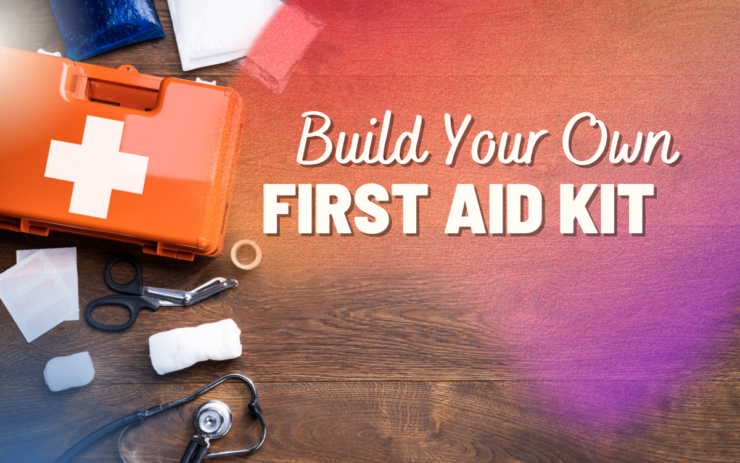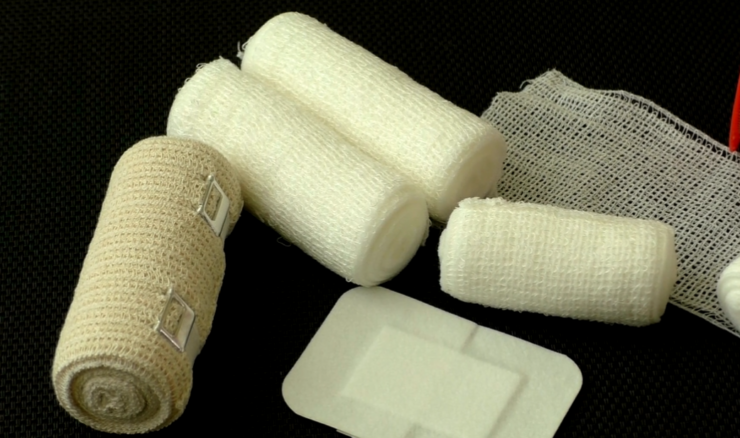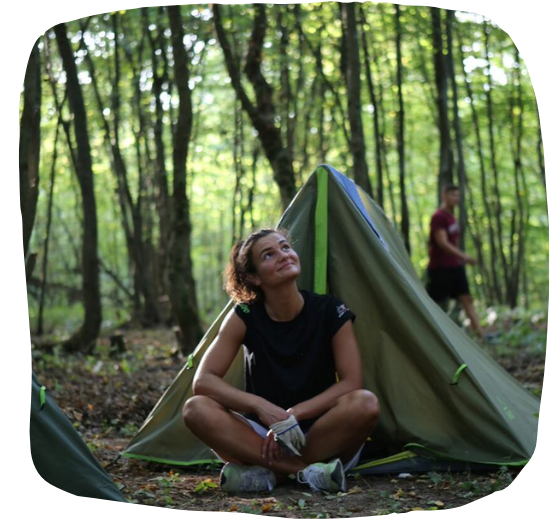A first aid kit is vital to help you deal with minor injuries; everyday accidents as well as emergencies. There are two ways to get a first aid kit. You can purchase a premade first aid kit, which is expensive but less time taking. On the other hand, you can build your own first aid kits which has several advantages.
Contents
Advantages to building your own first aid kits
- Relatively cheaper than premade first aid kits
- Give freedom to be selective about supplies according to your number of family members. How much of the items you want.
- Can refill the used items with just a new one, no need to buy a whole premade first aid kit.
- Can customize your own first aid kit according to the activity you are building it for (i.e Camping, hacking, or for home)
- No need to pay for those unwanted items which are of no use in your case and are present in premade first aid kits.
- Easy to make sure expiry dates of your medication, as you assembled it by yourself.
This guide assists you in how to build your own first aid kits in every aspect of it. Either it’s a question of how much quantity of supply you need or what items should be in a first aid kit for different activities. This guide will cover all these answers. So stick with us to understand the process of building your first aid kit.
Factors to consider
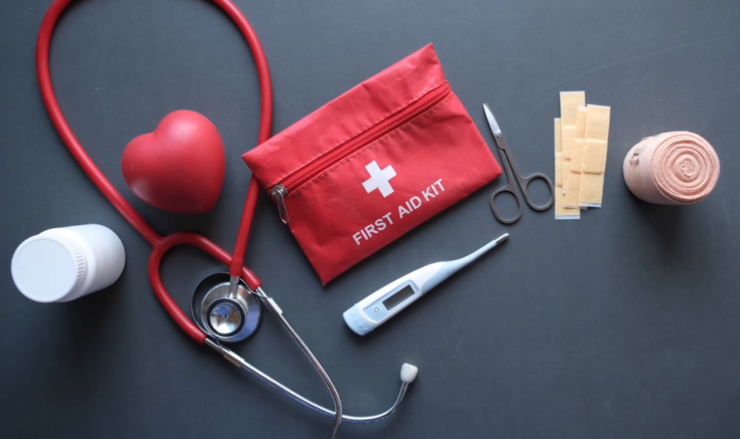
Before making your mind about how to build your own first aid kits, you need to consider multiple factors first.
1. Number of people you are building it for
One of the reasons you build your own first aid kits. You want to customize the supply of items in it as I explained earlier as well. So size and content supply in the first aid kit vary with the Number of people going to use it.
2. Activities you are building a first aid kit for
It’s crucial to consider what purpose you are going to use it. Is it a basic first aid kit? Or specialized kit based on your hobbies or work? If you are building a kit for a home that will be different from the outdoor version.
3. Size and storing
Ask you self question where you are going to keep it? Your home’s kitchen? Your backpack bag or bug out bag? It’s essential to think of size first. As for backpacking kit should be durable and small in size so as to fit in the backpack. On the contrary, the home first aid kit can be large in size and even can be in shape like a box.
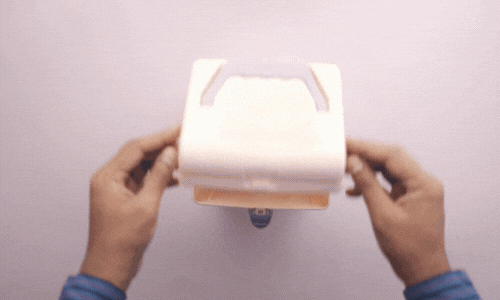
4. Possible trauma risk involved
Let’s understand this factor by thinking of an example. In a home, a common injury would be burn or cuts and treatment of cuts or burns would need different items from the first aid kit. On the other hand, for hiking on a mountain, the risk of abrasion injury involved.
So this determines the supply of particular favorite items in the first aid kit. Don’t worry this article will cover what items are often used for a particular activity (camping, hiking or home)
5. Nearest medical facility
Considering how far you live from the nearest medical facility is crucial. If a medical facility is not nearby, then you need a comprehensive first aid kit. A first aid kit that has all the necessary items to deal with severe injuries as well, so to buy a little bit of more time until you reach a medical facility.
Preparation to build your own first aid kits
1: Finding a suitable first aid kit bag or box:
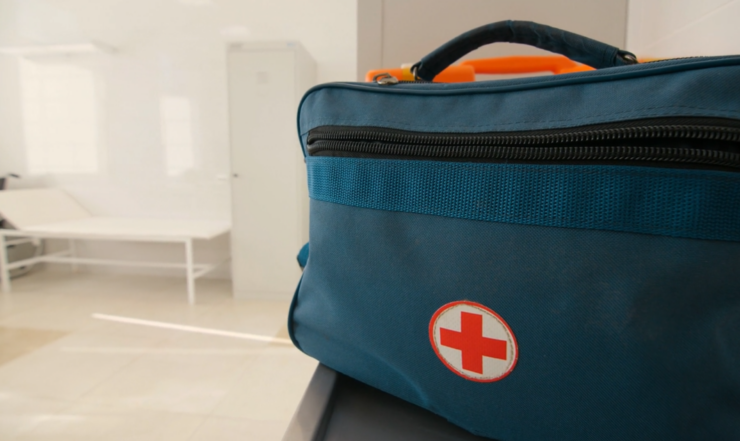
The first thing you need is a container or a bag to hold items in it. Bag or container should be waterproof, durable, and enough in size to hold your supplies. As for backpacking, size matters, as limited space is available in backpacking bags. However, the size of the first aid kit for home doesn’t matter a lot, as usually enough space is available at home.
Two options you have, to separate different types of item in a first aid kit
- Buy a first aid bag with multiple partitions
- Buy zips lock plastic bags; label it with a black marker. Then put in a first aid kit bag.
Ziplock plastic bag is a good option for a non-rigid first aid kit, which is suitable for backpacking. Ziplock plastic bags are also transparent; items can be seen easily.
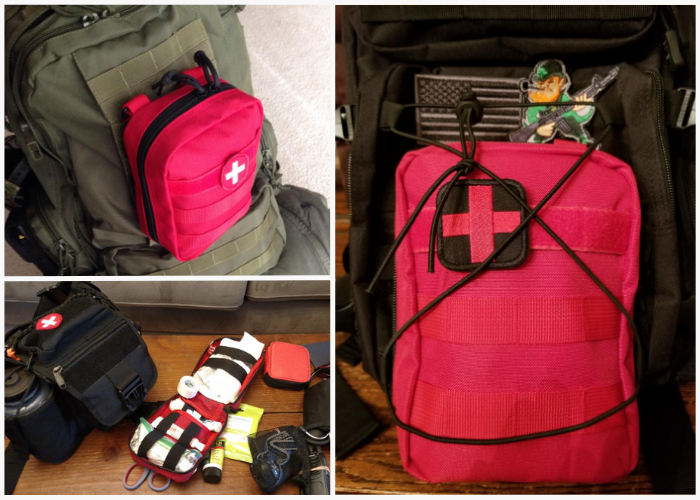
In this guide, we are going to categorize items into four categories. The division of items into categories will help you to find items easily and quickly in the hour of need. Separate your items by category, which I mentioned below. Pack these items in a zip-lock plastic bag label it with a black marker. The four categories would be:
- Bandages
- Wound care
- Basic medical tools
- Medication
Here you go, the very answer you might be waiting for how to build your own first aid kits. We have managed to compile a comprehensive checklist for building your own first aid kit.
2: Compiling first aid kit items
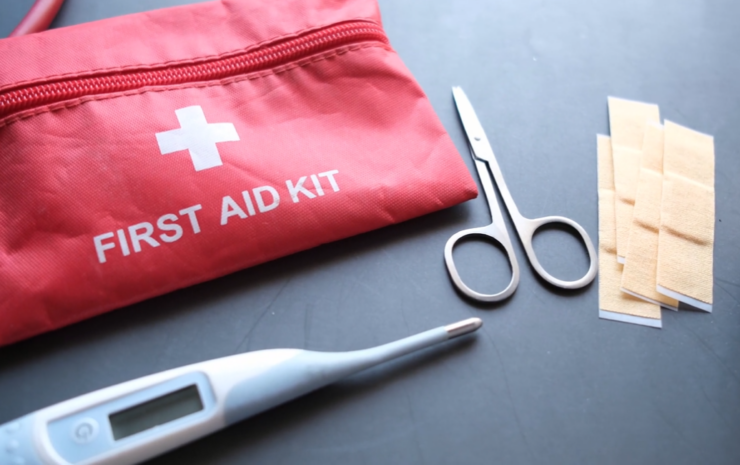
Select from the below checklist to customize your own first aid kit to fill your needs. This checklist is based on recommendations from medical professionals.
Bandages:
- Triangular bandages
- Roller gauze bandages (3 inches or 4 inches)
- Knuckle bandage
- Elastic bandages
- Adhesive bandages of various sizes
Wound Care:
- Gloves
- Antiseptic wipes packet/Alcohol pads
- Sterile gauze pad (4 × 4 or 3 × 3 inches )
- Non- sticking dressing
- Antibiotic ointment or cream.
- Cotton balls and swabs
- Instant cold compress
Basic medical tools:
- Trauma scissor
- Tweezers
- CPR breathing barrier mask
- Adhesive tape
- Safety pins
- Oral thermometer
- Pocket Flashlight
- Heat Reflecting Blanket

Medications:
- Antihistamine 25mg (anti-allergy)
- Ibuprofen 200mg (pain killer)
- Loperamide HCI 2mg (anti-diarrheal)
- Electrolyte tablets
- Acetaminophen 500mg (fever)
- Antacid 420mg (for stomach problems)
Keep in mind:
The above checklist is a comprehensive one, which means, it contains all the supplies a first aid kit can have. We have formed it because we want all the possible items available for you. So, that you can choose the best out of them to build your own first aid kit.
You can customize your first aid kit by selecting the above items according to your need. Speaking of need, one more thing you might be wondering how much supply of the above items is good enough for two or three-person? Or what products should be included in a first aid kit for specific trips or activities, e.g. first aid kit for home, car, camping, hiking or hunting?
This guide will provide you with a first aid kit checklist for different purposes. Moreover, the guide will as help you to estimate supplies of items needed for the number of people going to use it. Keep reading to know the unknown.
Build your own first aid kit for home:
A home first aid kit is independent of size, as you can manage enough space somewhere in the home. So you can buy a first aid bag, or even a bucket can work superbly for this purpose. Supplies of the product can vary with Number of the family members. Another difference for home first aid kit is, usually people tend to store medications separately. So no need to put your prescribed medication in a first aid kit.
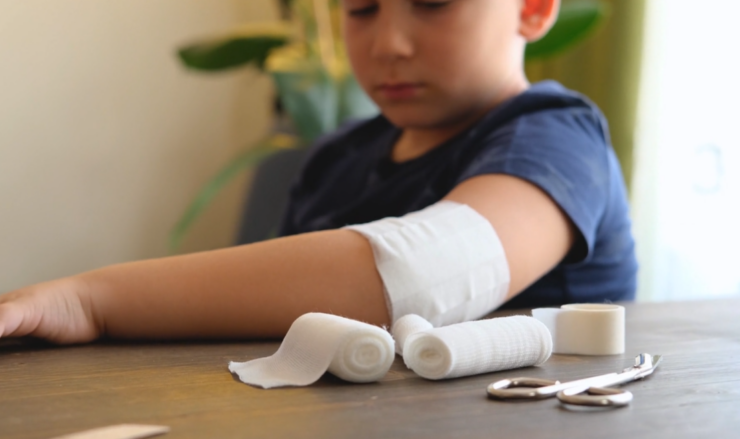
It’s recommended that the following products with below quantity would be enough for four-person:
Bandages:
- 2 Triangular bandages
- 1 Roller gauze bandages (3 inches and 4 inches)
- 1 Elastic bandage
- 25Adhesive bandages of various sizes
Wound Care:
- 4 Gloves
- 5 Antiseptic wipe packet/Alcohol pads
- 5 Sterile gauze pad (4 × 4 or 3 × 3 inches)
- 4 Non- sticking dressing
- 5 Antibiotic ointment packets (approximately. 1 gram) / cream.
- Cotton balls and swabs (1 pack each)
- 1 Instant cold compress
Basic medical tools:
- 2 Adhesive tape (10 yards 1 inch 0)
- 1 Tweezer
- 1 Trauma scissor
- 1 CPR breathing barrier mask
- 12 Safety pins
- 1 Oral theremometer
Build your own first aid kits for car or travel:
A travel first aid kit is quite similar to the home version. The major difference in a first aid kit for traveling, that should contain your prescribed medication and relatively smaller in size. Considering adding some more important things such as waterproof, Matches, Insect repellent.
The checklist for car or travel for four-person will be :
Bandages:
- 2 Triangular bandages
- 1 Roller gauze bandages (3 inches and 4 inches)
- 1 Elastic bandage
- 25 Adhesive bandages of various sizes
Wound Care:
- 2 Gloves
- 5 Antiseptic wipe packet/Alcohol pads
- 5 Sterile gauze pad (4 × 4 or 3 × 3 inches)
- 4 Non- sticking dressing
- 5 Antibiotic ointment packets (approximately. 1 gram) / cream.
- Cotton balls and swabs (1 pack each)
- 1 Instant cold compress
Basic medical tools:
- 1 Tweezer
- 1 Trauma scissor
- 1 CPR breathing barrier mask
- 1 Adhesive tape (10 yards 1 inch 0)
- 12 Safety pins
- 1 Oral thermometer
Medications
- Antihistamine 25mg (anti-allergy)
- Ibuprofen 200mg (pain killer)
- Loperamide HCI 2mg (anti-diarrheal)
- Electrolyte tablets
- Acetaminophen 500mg (fever)
- Antacid 420mg (for stomach problems)
Additional for traveling:
- 1 Flashlight
- 1 Waterproof matches/lighter
- 1 Insect repellent
Build your own first aid kits for camping/hiking
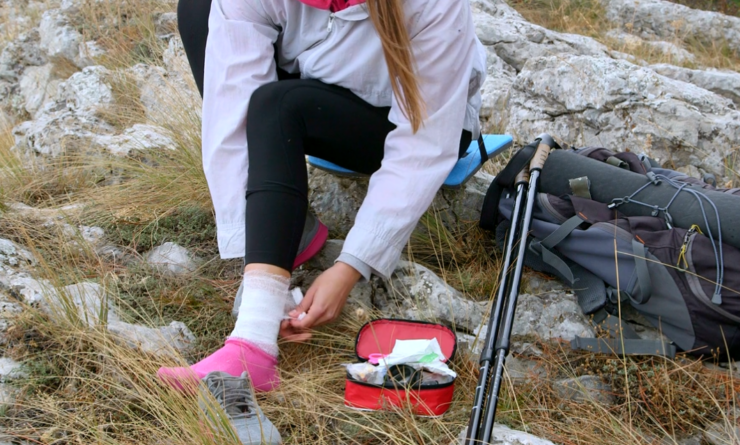
When customizing your mobile-first aid kits such as for camping or hiking, choose only those items which are absolutely necessary. Mostly backpacking is involved in camping or hiking, so space is limited in this case.
Therefore, the size and shape of first aid should be in mind, try to buy a small and durable bag that can fit in your backpacking. Moreover, the outdoor first aid kit must have proper medication to deal with low-grade fever, allergies, and Diarrhea.
Some of the additional products might be handy such as wrestle, waterproof matches, insect repellent, Blanket.
Bandages:
- 1 Triangular bandages
- 1 Roller gauze bandages (3 inches and 4 inches)
- 1 Elastic bandages
- 12Adhesive bandages of various sizes
Wound Care:
- 2 Gloves
- 2 Antiseptic wipe packet/Alcohol pads
- 2 Sterile gauze pad (4 × 4 or 3 × 3 inches)
- 2 Non- sticking dressing
- 3 Antibiotic ointment packets (approximately. 1 gram) / cream.
- Cotton balls and swabs (12 pieces each)
- 1 Instant cold compress
Basic medical tools:
- 1 Trauma scissor
- 1 Tweezer
- 1 CPR breathing barrier mask
- 1 Adhesive tape (10 yards 1 inch)
- 6 Safety pins
- 1 Oral thermometer
Medication:
- Antihistamine 25mg ( anti-allergy )
- Ibuprofen 200mg (pain killer)
- Loperamide HCI 2mg (anti-diarrheal)
- Electrolyte tablets
- Acetaminophen 500mg (fever)
- Antacid 420mg (for stomach problems)
Additional items for outdoor activities:
- Whistle
- Flashlight
- Lighter or matches
- 1 Insect repellent
- First aid blanket/space blanket
Here is a list of 10 items that must be included in a first aid kit.
Quantity in the above checklist is for four people only; if your family members are more than that, you can increase the number of items accordingly. You can customize your first aid kits with desired items and quantity as well by following the above checklists.
In conclusion, building your own first aid kit is easy with some advantages as we explained above. All you need is adequate guidance. Hopefully, this guide provides you a complete step-by-step guide to clear your concept about how to build your own first aid kits.
References:
https://www.redcross.org/get-help/how-to-prepare-for-emergencies/anatomy-of-a-first-aid-kit.html
https://www.mayoclinic.org/first-aid/first-aid-kits/basics/art-20056673
https://www.lifespan.org/lifespan-living/12-key-items-first-aid-kits

I love camping! There’s nothing like being in nature, getting away from the hustle and bustle of everyday life.

